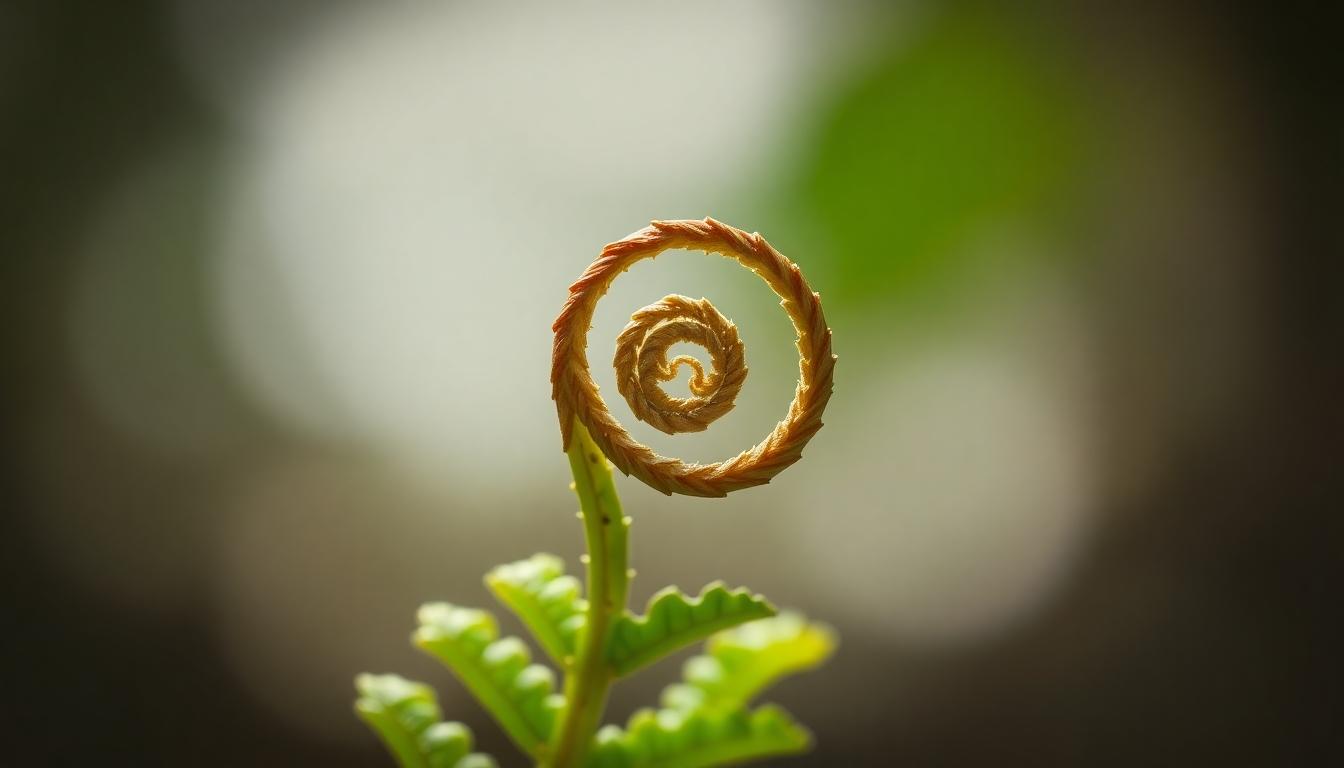Ferns have captivated human imagination for centuries with their delicate fronds and ancient lineage. These prehistoric plants carry rich symbolic meanings across cultures and time periods, representing everything from sincerity and magic to new beginnings and eternal youth.
We’ll explore the intriguing area of fern symbolism and uncover why these resilient plants have become powerful metaphors in various traditions. From Victorian language of flowers where ferns signified fascination and confidence, to indigenous beliefs where they embodied healing and protection – these verdant treasures hold deeper significance than their simple beauty suggests. Join us as we investigate into the hidden meanings behind these elegant plants that have survived on Earth for over 360 million years.
The Ancient Symbolism of Ferns Across Cultures
Ferns appear in cultural symbolism dating back thousands of years, transcending geographical boundaries with their rich metaphorical meanings. Ancient civilizations consistently associated these prehistoric plants with mystical properties and spiritual significance due to their unique reproductive cycle and evergreen nature.
Celtic and European Traditions
Celtic peoples regarded ferns as sacred plants connected to eternal youth and mystical knowledge. The “fern seed” was believed to grant invisibility powers to anyone who possessed it, creating a connection between ferns and magical abilities. European folklore maintained that collecting fern spores on the summer solstice would bring prosperity and protection from evil spirits throughout the year.
Asian Fern Symbolism
Japanese culture incorporated fern motifs called “warabi-te” (fern hands) in family crests and artistic expressions, symbolizing family growth and future generations. Chinese traditions viewed ferns as symbols of longevity and resilience, often including them in medicinal practices aimed at extending life. The curled fiddlehead shapes represented endless life cycles in many East Asian artistic expressions, appearing in everything from temple carvings to textile patterns.
Indigenous American Perspectives
Native American tribes utilized ferns for both practical and symbolic purposes, seeing them as protectors of forest wisdom. Certain tribes considered ferns as links between the physical and spiritual worlds, using them in healing ceremonies and protection rituals. The Iroquois specifically associated fern patterns with balance and harmony in creation stories, embedding these meanings into their cultural practices and artistic traditions.
Oceanic and Pacific Interpretations
Māori culture incorporated fern imagery (koru) representing new life, growth, and renewal in their traditional art forms. The unfurling fern frond became a central symbol in New Zealand identity, representing both cultural heritage and natural abundance. Pacific Islander communities viewed ferns as connections to ancestral wisdom, placing them prominently in ceremonial spaces and traditional healing practices.
Ferns as Symbols of Eternal Youth and Rebirth

Ferns represent eternal youth and rebirth across many cultures due to their extraordinary 360-million-year history on Earth. Their distinctive unfurling fronds, known as fiddleheads, symbolize new beginnings and exemplify the plants’ remarkable resilience and adaptability throughout the ages.
The Victorian Language of Ferns
The 19th century witnessed an unprecedented “fern craze” (pteridomania) that swept through Victorian society, establishing these ancient plants as emblems of fascination and secrecy. Victorians incorporated fern imagery extensively in their art and literature, using these verdant plants to convey messages of humility, sincerity, and connections to mysterious hidden realms. Ferns’ lush foliage became metaphorically linked to vitality and rejuvenation in Victorian symbolism, reinforcing their association with eternal youth and timeless beauty. The fascination with ferns during this period highlighted society’s growing interest in the natural industry and its symbolic potential for expressing complex emotions and ideas.
Celtic and Norse Connections to Fertility
Celtic mythology deeply intertwined ferns with the magical Otherworld, attributing supernatural properties to these mystical plants. Ancient Celts believed ferns possessed powerful abilities, including granting invisibility and offering protection against malevolent forces. Their connection to enchantment made ferns prominent figures in fairy folklore throughout Celtic traditions. Though direct Norse connections are less extensively documented, Celtic reverence for ferns as fertility symbols shares common ground with broader European traditions. These traditions associated fern spores with life cycles and abundance, establishing them as powerful symbols of regeneration and fertility. Maori culture similarly venerates the silver fern as a representation of strength, unity, and ancestral connections to the land, demonstrating the plant’s universal appeal as a symbol of life’s continuity.
Magical Properties and Mystical Meanings of Ferns

Ferns possess a rich tapestry of magical associations and mystical significance across many cultures throughout history. These ancient plants have been revered for their supernatural qualities and spiritual connections in folklore and traditional practices worldwide.
Invisibility and Secret Knowledge
Ferns are deeply connected to invisibility and the pursuit of hidden wisdom in various cultural traditions. Finnish folklore maintains that fern seeds collected specifically on Midsummer’s Night bestow the power of invisibility and reveal the location of buried treasures. Celtic traditions associate ferns with the fairy area, claiming their rare and invisible flowers grant special abilities including fairy sight, communication with animals, and control over weather patterns. Many historical references to ferns’ mystical properties appear in literary works by renowned authors like Shakespeare and Hans Christian Andersen, who incorporated the plants’ association with unlocking secret knowledge into their stories. The elusive nature of fern reproduction—with spores rather than visible seeds—enhanced their reputation as plants with hidden powers accessible only to those with special knowledge.
Protection and Purification Rituals
Ferns symbolize resilience and protective energies in spiritual practices across different traditions. Wiccan rituals use burning fern fronds to summon rainfall or cleanse spaces of negative energies, highlighting their purification properties. Native American traditions recognize ferns for both their medicinal applications and spiritual protective qualities against harmful forces. The evergreen nature of certain fern species represents eternal youth and purification, making them valuable components in ceremonies designed to promote mental clarity and emotional healing. Their consistent presence throughout seasons reinforces their symbolic connection to endurance and protection, while their unfurling fronds represent the unfolding of new beginnings and spiritual awakening. Japanese culture embraces ferns as symbols of adaptability and renewal, while Maori traditions revere the silver fern as an emblem of strength and resistance against adversity.
Ferns in Modern Symbolism and Tattoo Art

Ferns continue to hold powerful symbolic meaning in contemporary contexts, particularly in artistic expressions like tattoos and modern design. Their intricate patterns and ancient lineage make them perfect symbols for personal journeys and groundbreaking experiences.
Tattoo Symbolism
Fern tattoos represent personal strength and resilience in modern body art. The unfurling fern frond, known as a koru in Māori culture, symbolizes new beginnings, growth, and personal transformation. Many people choose fern tattoos after overcoming important life challenges, using these ancient plants to embody their own journey of renewal.
Artists frequently incorporate ferns into larger nature-themed designs, where they complement other woodland elements while adding texture and depth. Some popular fern tattoo styles include:
- Minimalist outlines emphasizing the geometric perfection of fern fronds
- Botanical illustrations showcasing scientific detail and natural accuracy
- Tribal designs drawing from Māori and Pacific traditions
- Watercolor interpretations blending fern shapes with flowing colors
Contemporary Art and Design
Modern artists embrace ferns for their intricate natural patterns and symbolic associations. Interior designers incorporate fern motifs in wallpapers, textiles, and decorative objects to bring elements of natural resilience and growth into living spaces. The distinctive spiral patterns of fiddleheads appear in jewelry design, representing continual growth and the unfolding of potential.
Fashion designers draw inspiration from fern patterns for textile prints, connecting wearers to themes of endurance and natural beauty. In graphic design, fern silhouettes create instantly recognizable motifs that evoke connections to both ancient wisdom and contemporary environmental consciousness.
Digital Culture and Brand Identity
The distinctive shape of the New Zealand silver fern has transcended its cultural origins to become a globally recognized symbol. Sports teams, national organizations, and commercial brands adopt fern imagery to communicate values of strength, persistence, and natural authenticity.
Digital platforms feature fern imagery in logos and branding to convey growth mindsets and connection to natural systems. Social media aesthetics often incorporate fern patterns in lifestyle photography, suggesting harmony with nature and sustainable living practices.
In tattoo art, digital design, fashion, and branding, ferns embody a perfect balance between delicate beauty and surprising strength – qualities that resonate deeply in our modern search for meaning and personal expression.
Spiritual Significance of Different Fern Species

Fern species carry unique symbolic meanings that transcend their botanical characteristics. Many cultures attribute exact spiritual qualities to different fern varieties, with each type embodying distinctive metaphysical properties and symbolic associations.
Maidenhair Fern Symbolism
Maidenhair ferns represent grace and delicate strength in spiritual contexts. These elegant plants embody sincerity and humility in Victorian traditions, reflecting their subtle beauty and unassuming presence. Their ability to thrive in challenging environments symbolizes perseverance and quiet resilience even though fragile appearances. Though exact maidenhair symbolism isn’t extensively documented in historical records, their place in wider fern mythology connects them to protective energies and pure intentions. The delicate, fan-shaped fronds mirror life’s gentle persistence, creating a powerful metaphor for overcoming obstacles with patience and steadfastness.
Bracken Fern Meaning and Lore
Bracken ferns hold potent mystical associations centered on protection, luck, and hidden knowledge. Celtic shamanic traditions valued these vigorous plants particularly when collected during Midsummer celebrations, drying and carrying them as talismans for protection and good fortune. Their rapid and sometimes aggressive growth patterns symbolize unchecked expansion and natural cycles, connecting them to concepts of wild magic and primal energy. The bracken’s ability to spread quickly across landscapes links it to abundance and fertility in spiritual practices. Ancient folklore portrays bracken as a plant with mysterious properties, its unfurling fronds representing secrets being revealed and its persistence symbolizing the endurance of natural wisdom through generations.
Incorporating Fern Symbolism into Daily Life

Fern symbolism offers many ways to enrich our everyday experiences with meaningful connections to nature. Home decor presents an ideal opportunity to embrace fern energy, with living plants or artistic representations serving as daily reminders of resilience and renewal. Fresh ferns in vases or potted varieties bring tranquility to living spaces while symbolizing new beginnings.
Personal growth journeys benefit tremendously from fern symbolism. During challenging times, reflecting on the fern’s ability to thrive in diverse conditions inspires perseverance and adaptability. Many people create mindfulness practices centered around the unfurling fern frond, using this natural process as a metaphor for gradually opening to new possibilities.
Cultural appreciation deepens our connection to fern symbolism. Learning about Māori reverence for the silver fern or Celtic associations with magic and the Otherworld enhances our understanding of these ancient plants. This knowledge allows us to respectfully incorporate these symbols into our lives with awareness of their rich historical significance.
Ceremonial occasions like weddings and new home blessings incorporate ferns as powerful symbols of fresh starts. Bridal bouquets featuring fern fronds celebrate renewal and growth in relationships. Housewarming gifts of potted ferns convey wishes for tranquility and flourishing in new spaces.
Garden design with intentional fern placement creates contemplative areas embodying endurance and strength. Shade gardens with various fern species establish peaceful retreats that connect visitors to ancient plant wisdom. These living symbols serve as daily reminders of nature’s resilience and our own capacity to overcome obstacles.
Conclusion
Ferns stand as living symbols that transcend time and culture with their powerful associations to growth renewal and resilience. Their ancient lineage continues to inspire us today whether we encounter them in forest walks tattoo designs or home décor.
By embracing fern symbolism we connect with traditions spanning from Victorian England to Māori culture while incorporating their energy of new beginnings and eternal youth into our lives. Their distinctive unfurling fronds remind us that transformation is always possible.
The enduring appeal of these remarkable plants speaks to their universal resonance. As we’ve discovered ferns aren’t just beautiful additions to our gardens and homes – they’re meaningful symbols that carry wisdom from the past into our present lives.
Frequently Asked Questions
What do ferns symbolize across different cultures?
Ferns symbolize various concepts across cultures, including sincerity, magic, new beginnings, and eternal youth. In Victorian times, they represented fascination and confidence. Celtic traditions linked ferns to eternal youth and magical abilities. Japanese culture incorporated fern motifs in family crests to symbolize growth, while Chinese traditions viewed them as symbols of longevity. Indigenous American tribes saw ferns as protectors of forest wisdom, and Māori imagery of ferns represented new life and renewal.
How old are ferns as a plant species?
Ferns are ancient plants with a lineage spanning over 360 million years. This remarkable longevity has contributed to their rich symbolic associations with endurance, resilience, and timeless wisdom across various cultures. Their ability to survive through major evolutionary periods has cemented their status as living symbols of strength and adaptability in the natural world.
What was the “fern craze” or pteridomania?
Pteridomania, or the “fern craze,” swept through Victorian society in the 19th century. During this period, ferns became wildly popular as collectors’ items, decorative motifs, and subjects for nature study. They symbolized fascination and secrecy in Victorian culture, conveying messages of humility and sincerity in art and literature. This obsession led to ferns appearing on everything from pottery to furniture designs.
What makes ferns symbolically significant in New Zealand?
The silver fern (ponga) holds profound cultural significance in New Zealand, particularly for the Māori people. It represents strength, unity, and new beginnings. The distinctive unfurling koru (fern frond) symbolizes renewal and transformation. The silver fern has become a national emblem, appearing on the country’s sports team logos, military badges, and various national symbols, embodying New Zealand’s identity and cultural heritage.
How are ferns used symbolically in modern tattoo art?
Fern tattoos have become increasingly popular as symbols of personal strength and resilience. The spiral koru design represents new beginnings and personal transformation. Artists incorporate ferns into nature-themed designs to symbolize growth and connection to the natural world. These tattoos often carry deep personal meaning, reflecting the wearer’s journey, cultural heritage, or desire for renewal and strength.
What spiritual properties are attributed to different fern species?
Different fern species carry unique symbolic meanings. The maidenhair fern represents grace and delicate strength, embodying sincerity and humility. Bracken fern is associated with protection, luck, and hidden knowledge in Celtic traditions. Boston ferns symbolize purification and renewal, while staghorn ferns represent resilience and adaptability. These specific associations reflect the diverse physical characteristics and growing patterns of each fern variety.
How can I incorporate fern symbolism into my daily life?
Incorporate fern symbolism by adding fern plants or motifs to your home décor to invite growth and renewal. Use ferns in personal ceremonies marking new beginnings or transitions. Create a meditation garden with ferns to symbolize resilience and strength. Wear jewelry featuring fern designs as reminders of personal growth. Study their historical significance in different cultures to deepen your appreciation for their symbolism and connection to natural wisdom.
What do unfurling fern fronds (fiddleheads) symbolize?
Unfurling fern fronds, known as fiddleheads, symbolize transformation, new beginnings, and potential. Their spiral structure represents the unfolding of life and continuous growth. Many cultures view this distinctive unfurling pattern as a powerful symbol of rebirth and renewal. The Māori people call this spiral koru, considering it a representation of new life, growth, strength, and peace as it transforms from a tight coil to an open frond.










